Virus Capsid
Double-link expandohedra
a mechanical model for expansion of a virus
By F. Kov´acs / T. Tarnai / S.D. Guest and P.W. Fowler
Research Group for Computational Structural Mechanics, Hungarian Academy of
Sciences, Budapest, M˝uegyetem rkp. 3., H-1521 Hungary
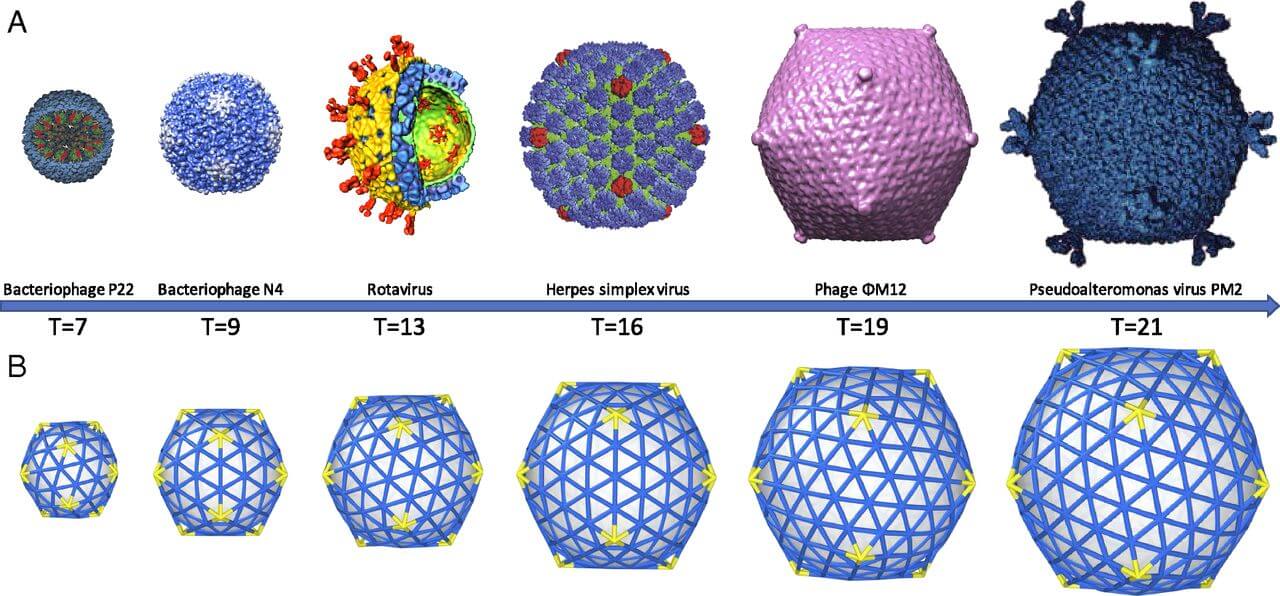 Article
Article
Many viruses consist of an outer protein coat (the virion) containing a DNA or RNA ‘payload’, where the virion undergoes reversible structural changes that allow switchable access to the interior by the opening of interstices through expansion.
These changes may be driven, for example, by variations in pH of the biological medium. The present paper introduces a mechanical model that helps to understand the expansion in terms of classical principles of structural mechanics.
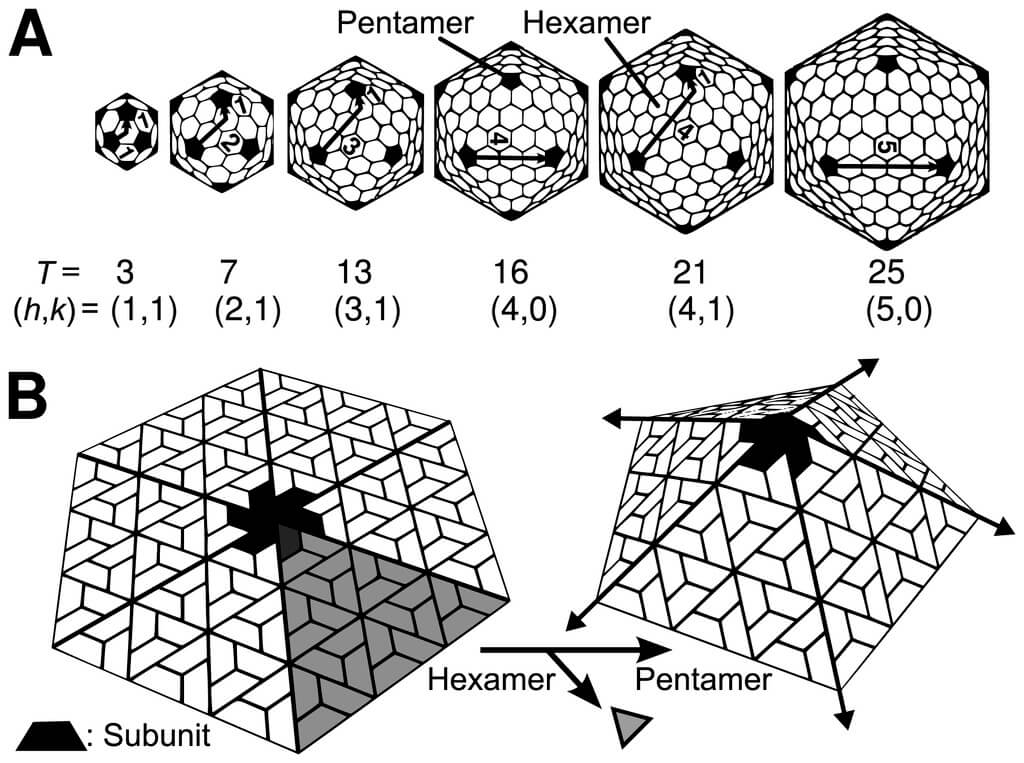 In engineering terms, virion expansion can be considered as the actuation of expandable-retractable nanostructure. Expanding structures on the macroscopic scale have been well studied with a view to exploitation e.g. as deployable structures (ellegrino & Guest, 2000).
In engineering terms, virion expansion can be considered as the actuation of expandable-retractable nanostructure. Expanding structures on the macroscopic scale have been well studied with a view to exploitation e.g. as deployable structures (ellegrino & Guest, 2000).
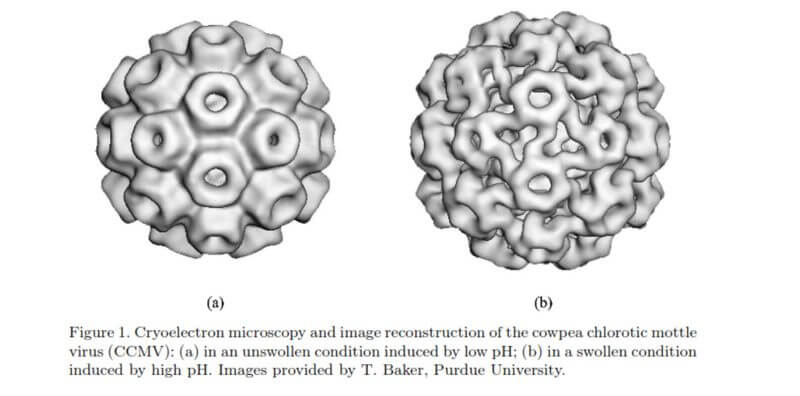 Kov´acs et al. (2003) introduced a class of expandable polyhedral structures, the expandohedra, consisting of prismatic faces with a single link along each edge formed by hinged plates. The existence of a finite breathing motion for such systems depends critically on the correct geometry of the linking hinge assembly.
Kov´acs et al. (2003) introduced a class of expandable polyhedral structures, the expandohedra, consisting of prismatic faces with a single link along each edge formed by hinged plates. The existence of a finite breathing motion for such systems depends critically on the correct geometry of the linking hinge assembly.
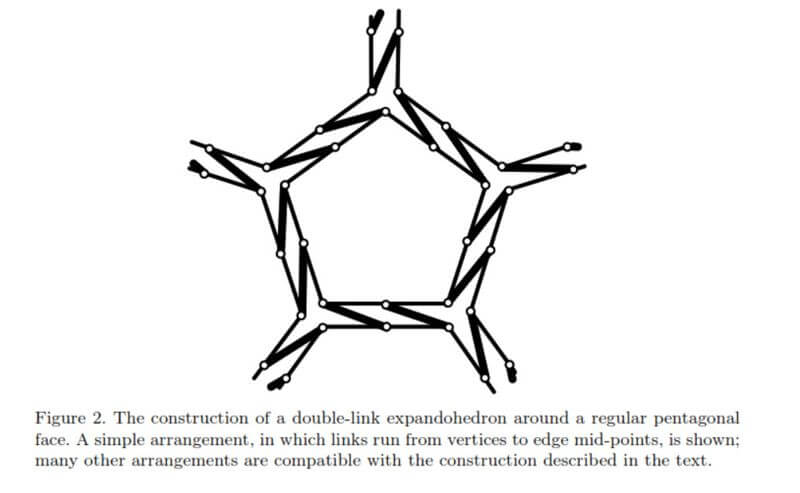 The present paper shows that it is possible to adapt the notion of an expandohedron to the biological context by constructing a double-link expandohedron with several desirable properties. Not only is the double-link structure closer to the observed virus morphology, while retaining a finite breathing mode, but the existence of this mode is a generic symmetry feature that does not depend on a particular linkage geometry.
The present paper shows that it is possible to adapt the notion of an expandohedron to the biological context by constructing a double-link expandohedron with several desirable properties. Not only is the double-link structure closer to the observed virus morphology, while retaining a finite breathing mode, but the existence of this mode is a generic symmetry feature that does not depend on a particular linkage geometry.
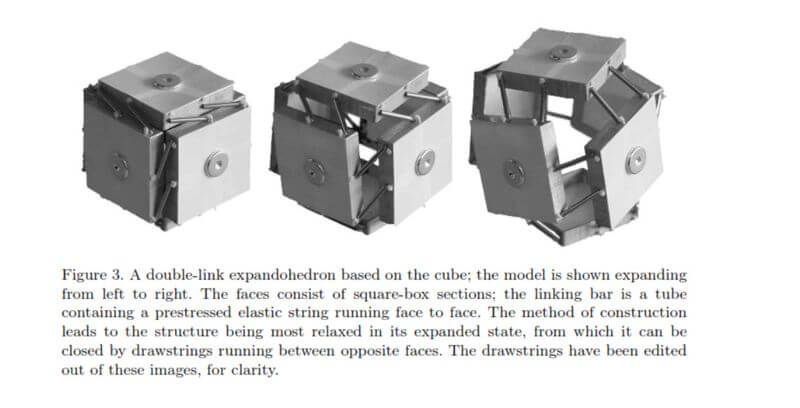 New symmetry-based techniques have been used to provide a general account of the mobility of such expandohedra, giving closed formulae for the symmetry excess of mechanisms over states of self stress for all the possible double-link expandohedra based on trivalent parents. The formulae are cast in terms of the number of links.
New symmetry-based techniques have been used to provide a general account of the mobility of such expandohedra, giving closed formulae for the symmetry excess of mechanisms over states of self stress for all the possible double-link expandohedra based on trivalent parents. The formulae are cast in terms of the number of links.
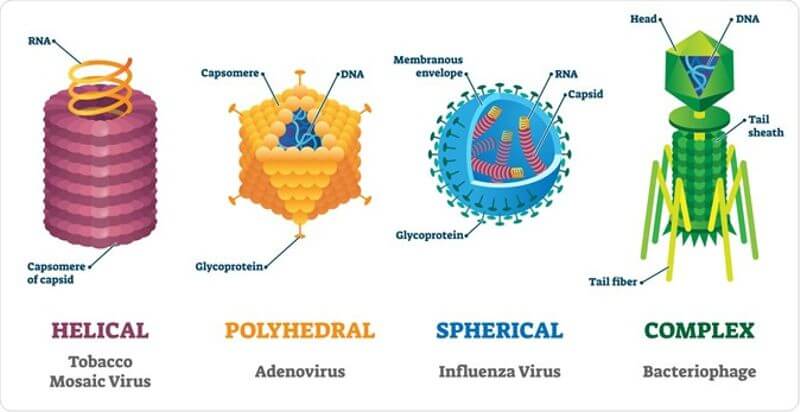 Specific shapes [1]
Specific shapes [1]
Icosahedral
The icosahedral structure is extremely common among viruses. The icosahedron consists of 20 triangular faces delimited by 12 fivefold vertexes and consists of 60 asymmetric units. Thus, an icosahedral virus is made of 60N protein subunits.
Prolate
An elongated icosahedron is a common shape for the heads of bacteriophages. Such a structure is composed of a cylinder with a cap at either end. The cylinder is composed of 10 elongated triangular faces.
Helical
Many rod-shaped and filamentous plant viruses have capsids with helical symmetry. The helical structure can be described as a set of n 1-D molecular helices related by an n-fold axial symmetry.
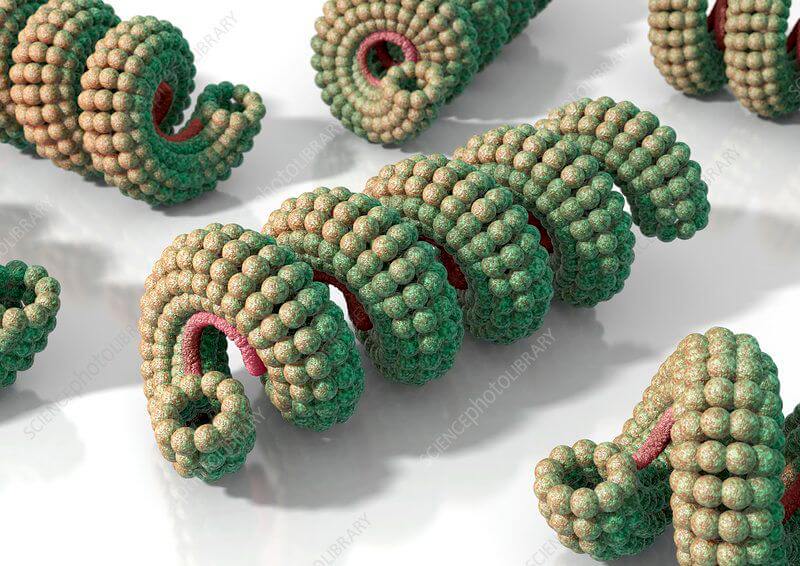 References
References
[1] https://en.wikipedia.org/wiki/Capsid




























Comments